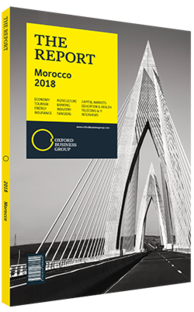Flexible exchange rate expected to boost Moroccan exports and preserve low inflation
The country is preparing to transition from a pegged exchange rate controlled by Bank Al Maghrib (BAM), the central bank, to a more flexible system. Under this new monetary policy framework, the exchange rate would be allowed to fluctuate within a regulated band set by BAM, with the central bank gradually widening the fluctuation window over the long term. As a net importer that depends heavily on international markets for fossil fuels and other primary goods, Morocco is vulnerable to sudden international price changes. Therefore, this gradual approach to the dismantling of the fixed exchange rate system is intended to protect the country from external shocks.
Currently, the dirham is pegged to the currencies of the country’s two main trading partners, namely the eurozone and the US, with the euro making up 60% of the peg parity and the US dollar making up 40%. Initially, the exchange rate will fluctuate within a band of 2.5%, with the central bank set to intervene at the edges to prevent strong currency volatility. The day following such intervention the exchange rate will open once more at the peg level, not taking into account the previous day’s volatility.
MAIN REPERCUSSIONS: This new monetary policy is expected to have positive ramifications for several aspects of the country’s macroeconomic performance. The first of these is an increase in the competitiveness of Moroccan goods and services internationally. For example, a slightly devalued dirham will serve as a catalyst for exports and attract more foreign tourists. This comes in line with the tourism strategy outlined in the country’s development plan, Vision 2020, which aims to draw 20m tourists by the end of the decade.
A low dirham will also curb the pace of imports and encourage consumption of local goods. This would help reduce the chronic deficit in the Moroccan balance of trade, and foster the development of competitive and efficient industrial players. Furthermore, moving towards a more flexible exchange rate regime will help in the development of the financial sector in general, supporting the Casablanca Financial City (CFC). The mission of the CFC is to attract foreign investment to Africa to help finance its development and benefit from the continent’s considerable growth prospects. Lastly, a more flexible exchange regime will help regulate inflation, keeping it at current low levels of 2% on average. In the midst of socio-political instability in the region, preserving Moroccan purchasing power is crucial, especially following the government’s decision to cut the subsidy on fossil fuels in 2015.
SUCCESS FACTORS: As was the case in Egypt and Turkey, this exchange rate transition carries with it certain risks. Nevertheless, unlike these two countries, Morocco enjoys a sound and stable political environment, coupled with a well-managed economy.
Indeed, over the past 15 years the country has designed and implemented a set of strategies to boost the development of key industries and major infrastructure. These include Plan Maroc Vert for agriculture and Tanger-Med for major port developments. They also include Plan Emergence, which outlines the establishment of duty-free industrial zones to attract foreign investment – such as the Tangiers Automotive City, which now contains Renault assembly lines – and Plan Azur for the development of tourism, among others.
Importantly, King Mohammed VI responded to the events of the Arab Spring by proposing constitutional amendments to promote democratic institutions and protect individual rights. The kingdom also enjoys one of the most solid and resilient banking systems in the region, and has comfortable foreign exchange currency reserves to cushion a potential crisis.
Moreover, as part of the gradual move towards a flexible exchange rate system, the central bank will pursue a hands-on policy and will intervene if a major external shock occurs. It plans to shift towards a fully flexible exchange regime over the long term once all the prerequisites for a full transition have been met.
You have reached the limit of premium articles you can view for free.
Choose from the options below to purchase print or digital editions of our Reports. You can also purchase a website subscription giving you unlimited access to all of our Reports online for 12 months.
If you have already purchased this Report or have a website subscription, please login to continue.

